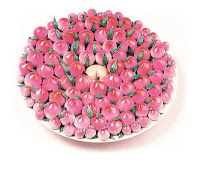Fang Lijun was born in 1983, Handan, Hebei province in China. During his childhood days, he attended the Children Cultural Place School where he met Li Xianting, now a renowned art critic, and was introduced by him to the exciting world of Art. From there, Fang Lijun decided to leave high school to pursue his artistic dream and did not turn back ever since.
Upon entering the prestigious Central Academy of Fine Art in Beijing, he first studied porcelain painting and woodcut techniques before switching to paintings. At the Academy he accessed international publications and familiarized himself with Western art history and contemporary art criticism, providing a strong guidance and foundation in the execution of his works later on.
 |
| Fang Lijun's 'No.6' sold at Sotheby's New York at a whopping USD 4.07 million |
friend brought his foreign friend to visit me, he was very sympathetic about my situation so he bought a painting at RMB 140. I used that and exchanged for some food vouchers.' Fang Lijun laughed as he recalled.
Unknown to this stranger, his simple act of kindness could result in a huge return. Today, Fang Lijun's works are market valued at anywhere between USD 500,000 to a few million dollars. During the Sotheby's New York 2007 auction, Fang Lijun's 'No.6' piece sold for a record price at USD 4 million. A smaller piece sold in Christie's Hong Kong last year also skyrocketed to USD 2.8 million.
 |
| Fang Lijun's 1990 - 1991 series sold at Christie's Hong Kong in 2011 at USD 2.8 million |
 |
| Fang Lijun with YANG GALLERY Singapore & Beijing's Managing Director, Ms. Susanna Yang |
In many ways, Fang Lijun is consistently climbing forward, not only are his works are fetching high prices in the auction market, he is also the proud owner of several well-regarded restaurants in Beijing. Critics say his works are now a reflection of the gilded age in China- perhaps another sign of the times: the young, naughty, disinterested and lost soul has finally found himself in the clouds.
Fang Lijun's way of life follows the course of his interest, and yet in some ways it defines and chronicles the times.












.jpg)





































